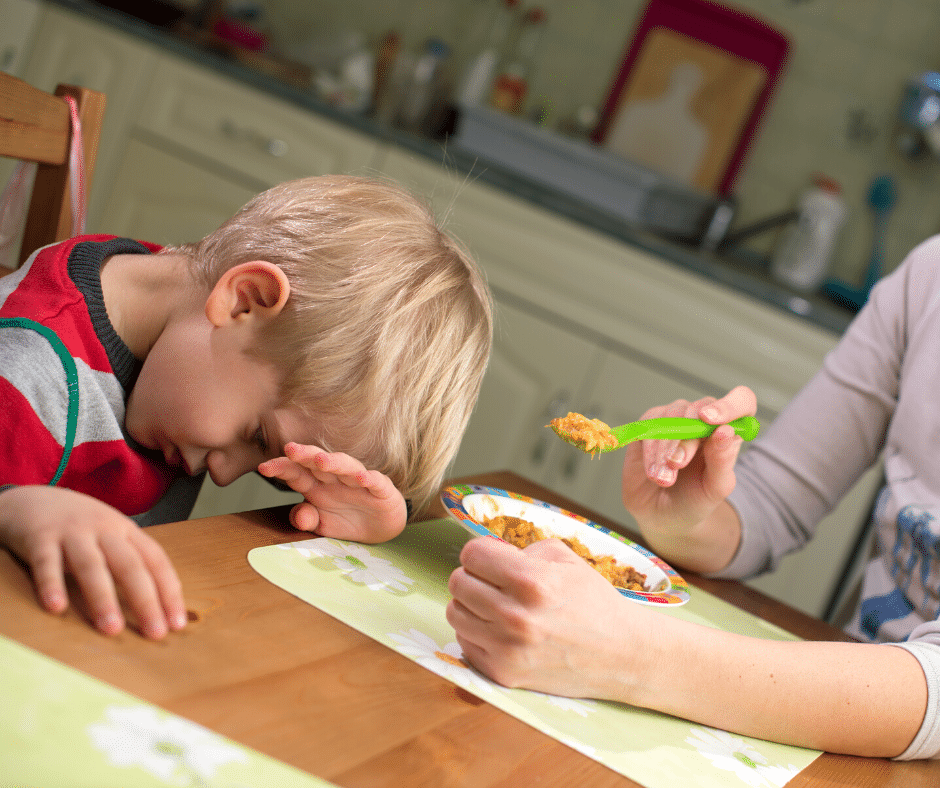About Feeding and Swallowing Disorders
Think about how you eat. You first have to get the food or drink to your mouth. You may use a fork, spoon, straw, or your hands. You have to open your mouth and take the food in. You close your lips to keep the food in your mouth. You then chew the food or move the liquid to get ready to swallow.

Children have to learn this process. They start by sucking and learn how to eat solid foods and drink from a cup. Children will have some trouble at first. Drinks may spill from their mouths. They may push food back out or gag on new foods. This is normal and should go away. A child with a feeding disorder will keep having trouble. Some children will eat only certain foods, or they may take a long time to eat. These children may also have a feeding disorder.
Some children also have swallowing problems, or dysphagia (dis-FAY-juh). Swallowing happens in three stages, or phases. A child can have a problem in one or more of these phases. They include:
- Oral phase – sucking, chewing, and moving food or liquid into the throat. Feeding is a part of the oral phase.
- Pharyngeal phase – starting the swallow and squeezing food down the throat. The child needs to close off their airway to keep food or liquid out. Food going into the airway can cause coughing and choking.
- Esophageal phase – opening and closing the esophagus, or the tube that goes from the throat to the stomach. The esophagus squeezes food down to the stomach. Food can get stuck in the esophagus. Or, a child may throw up a lot if there is a problem with the esophagus.
Signs of Feeding and Swallowing Disorders
Your child may have a feeding or swallowing problem if they:
- Arches their back or stiffens when feeding
- Cries or fusses when feeding
- Falls asleep when feeding
- Has problems breast feeding
- Has trouble breathing while eating and drinking
- Refuses to eat or drink
- Eats only certain textures, such as soft food or crunchy food
- Takes a long time to eat
- Has problems chewing
- Coughs or gags during meals
- Drools a lot or has liquid come out their mouth or nose
- Gets stuffy during meals
- Has a gurgly, hoarse, or breathy voice during or after meals
- Spits up or throws up a lot
- Is not gaining weight or growing
Not every child has every sign listed here. Your child may show a few signs or many of them. Your child may be at risk for:

- Dehydration or poor nutrition
- Food or liquid going into the airway, called aspiration
- Pneumonia or other lung infections
- Feeling embarrassed about their eating problems. They may eat alone or refuse to eat around others.
Causes of Feeding and Swallowing Disorders
There are many possible causes for feeding and swallowing problems, including:
- Nervous system disorders, like cerebral palsy or meningitis
- Reflux or other stomach problems
- Being premature or having a low birth weight
- Heart disease
- Cleft lip or palate
- Breathing problems, like asthma or other diseases
- Autism
- Head and neck problems
- Muscle weakness in the face and neck
- Medicines that make them sleepy or not hungry
- Sensory issues
- Behavior problems
Testing for Feeding and Swallowing Disorders
Talk to your child’s doctor if you think they have a feeding or swallowing problem. Your doctor can test your child for medical problems and check their growth and weight. A referral to Speech Therapy may be appropriate to look at your child’s feeding and swallowing skills. Learn more about our Speech Therapy services at Windom Area Health by clicking here.
By Joann Anderson, Speech Pathologist
